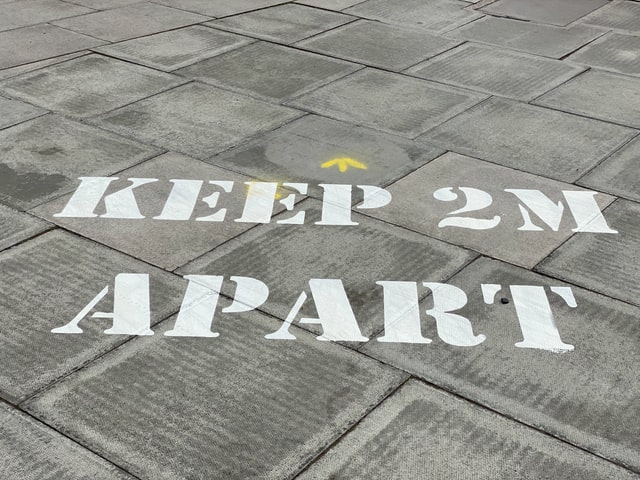
Government-mandated social distancing measures and human mobility restrictions implemented during the Covid-19 crisis continue to draw a lot of commentary. Significant differences of opinion have emerged in the popular press and policy discussions about the benefits and costs of these policies. On the one hand, the enormous economic burden of the social distancing mandates seems to be the price governments around the world have chosen to pay to maintain the functioning of their public health systems. On the other hand, it seems plausible that at least part of the observed reduction in economically relevant activities would still have occurred in the absence of any government intervention. Indeed, large literatures in health economics and related fields have established that people respond rationally to changes in perceived health risks, either by reducing the amount of the risky activity or by requiring monetary compensation to engage in it.
The dominance of Covid-19 in news coverage and the amount of public attention it has drawn, especially in the early stages of the pandemic, make such self-imposed adjustments to social interactions and to discretionary mobility an important hypothetical channel through which the pandemic continues to affect societies and economies.
To separate the effect on human mobility of information about the location-specific Covid-19 risk from that of government-imposed mobility restrictions, we combined: (i) data from the Google Community Mobility Reports with country-specific measures of the stringency of government responses to the pandemic, and (ii) daily counts of Covid-19 cases and deaths in a given country that proxy for information about the spread of the virus at a particular time and place. We estimated the relationship between the observed human mobility measures and Covid-19 cases and mortality, conditional on the timing of government mandates as well as other determinants of human mobility, such as daily ambient temperature and time effects.
Our results demonstrate that there is a significant self-imposed reduction in economically relevant types of human mobility in response to the arrival of information about the spread of the pandemic. This effect is independent of the government-imposed social distancing measures and often precedes them. Individual behavioral adjustments are mainly driven by the location-specific cumulative coronavirus case count.
At the same time, the magnitude of the self-imposed mobility restrictions is relatively small. This behavioral response can account for no more than 14% of the decline in economic activity during the initial stage of the pandemic. The effect of the government-imposed restrictions turns out to be much larger. Cumulatively, government actions account for up to 50 percentage points of the reduction in human mobility in our sample.
Overall, government-imposed measures are indeed the driving force behind the observed decline in human mobility and the associated economic activity. However, the existence of the meaningful self-imposed response to the pandemic implies that, regardless of any loosening of government-imposed restrictions, a complete return to pre-crisis levels of activity will not occur until the perceived health risk of the virus is significantly reduced.
© Silvia Mendolia, Olena Stavrunova, and Oleg Yerokhin
Silvia Mendolia is senior lecturer in economics at the University of Wollongong, Australia, and a Research Fellow at IZA.
Olena Stavrunova is associate professor of economics at the University of Technology Sydney, Australia
Oleg Yerokhin is a senior lecturer in economics at the University of Wollongong, Australia.
Find more IZA World of Labor coronavirus content on our curated topics pages: National responses to Covid-19 and Covid-19—Pandemics and the labor market.
Please note:
We recognize that IZA World of Labor articles may prompt discussion and possibly controversy. Opinion pieces, such as the one above, capture ideas and debates concisely, and anchor them with real-world examples. Opinions stated here do not necessarily reflect those of the IZA.